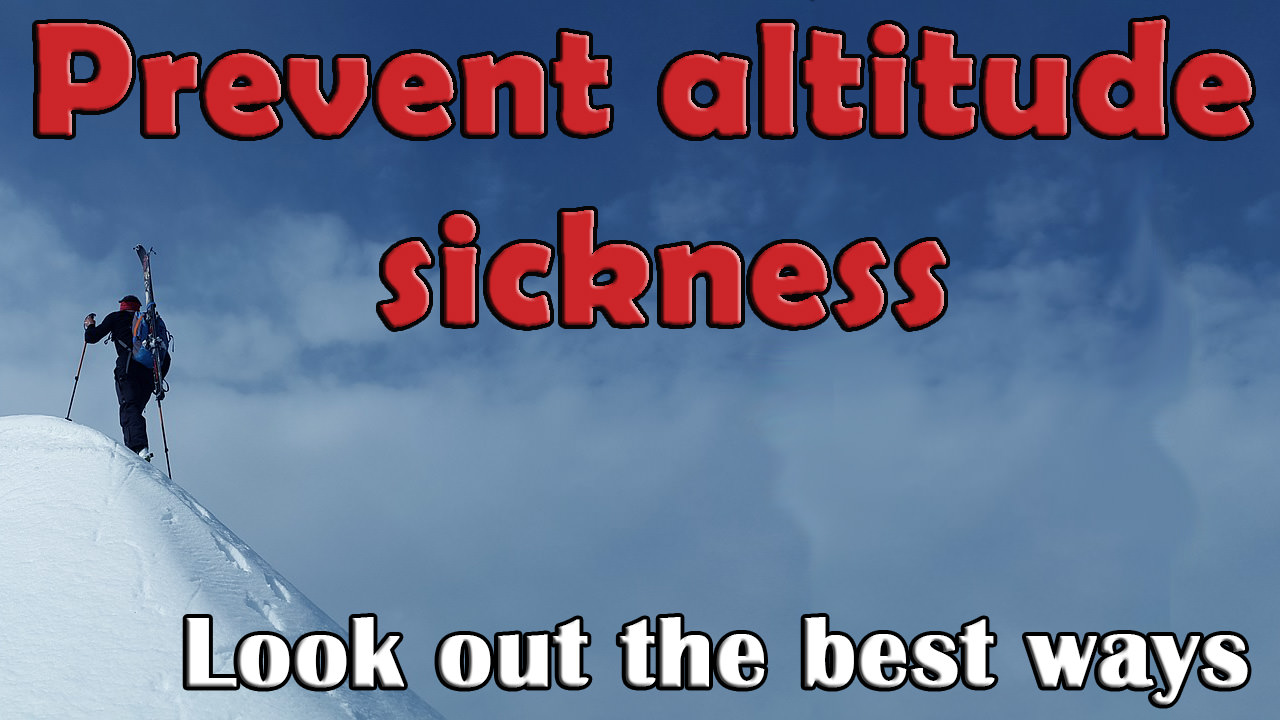Altitude sickness is an uncomfortable serious condition that normally affects some people who often travel to high-altitude destinations. In order to prevent altitude sickness while travelling, there are many possible ways available to cure this altitude sickness. When you are travelling to the top altitudes then the density of oxygen is very low. Once you arrive at the height of altitudes over 8, 000 feet, the oxygen levels present in the air is very low, which makes you feel difficulty in breathing due to decreased oxygen along with dry and cool air. However, there are a few steps to be taken out for both altitude sickness treatment and altitude sickness prevention.
Awesome tips to avoid altitude sickness
Altitude sickness can be real, comfortable and also sometimes dangerous condition. People who stay in high-altitude locations will suffer from altitude sickness. Below are a few tips to avoid the altitude sickness that include:
Hydrate
It is one of the best ways that help your body adjust to the high-altitude. The less humidity at elevation keeps the dry air and the person need to drink plenty of water as much as you would drink at home.
Replenish
When you are in high-altitude locations, you can take foods rich in potassium to eat such as avocado, broccoli, bran, bananas, celery, cantaloupe, greens, dried fruit, chocolate, granola, dates, tomatoes and potatoes. You can also eat plenty of pasta, whole grains, fruits and vegetables.
Shade yourself
The biggest sky of the mountain in country is not like your imagination figment. There is only a less water vapor in the air that makes the colour of the sky deep bluer than you see the sky at home. It also looks very pretty and 25% less protection from the sun.
Doctor’s order
If you are highly concerned about altitude sickness, you just visit your doctor, before you start your trip. One of the most familiar drugs used for altitude sickness prevention and cure is acetazolamide. To relieve from the symptoms of altitude illness, you can take non-perspective antidotes such as ibuprofen that helps to relieve the headaches.
Seek help
Before travelling to high-altitude locations, it is better to seek help from the medical professionals who understand the great impacts of altitude on the body.
Causes and symptoms of altitude sickness
Normally, the air is very thinner at high altitudes. When you go too much higher fast, you cannot get much oxygen to breathe as it requires. In such a case, you need to breathe faster that causes headache and other symptoms of altitude sickness. Some of the symptoms of altitude sickness are given below:
- Insomnia
- Dizziness
- Headaches
- Vomiting
- Loss of appetite
- Nausea or vomiting
- Fatigue or loss of energy
- Not feeling like eating
- Feeling sick to your stomach
- Feeling weak and tired
- Walk up during the night
- Feeling dizzy
- Not able to sleep well
- Don’t have enough energy to dress, eat yourself or do anything
Whenever you have found like any of these symptoms, you just take the right treatment for your altitude sickness and avoids the lead condition. When you plan to go on a high-altitude trek, you just learn about the altitude sickness and its symptoms as well as know how to treat it.
Altitude sickness- Types, prevention and treatment
Basically, there are three kinds of altitude sickness to be aware of such as
- Acute mountain sickness
- High-altitude cerebral edema
- High-altitude pulmonary edema
On the other hand, the best way to avoid altitude sickness is allowing your body to adjust to the reduced levels of oxygen in the highest altitude locations:
- Ascend slowly
- Avoid alcohol
- Sleep low
- Take medications
- Delay exercise
If you suffer from altitude sickness, you might follow any of these treatment options such as,
- Wait it out
- Move to lower ground
- Call your doctor
- Over the counter pain relievers
However, it is also very much important to listen to your body, especially while traveling to high-altitude locations. If you experience any of the symptoms of altitude sickness, you don’t go higher until your symptoms increase and then move to lower ground, if the symptoms get worsen.


 Training Mask Lab
Training Mask Lab